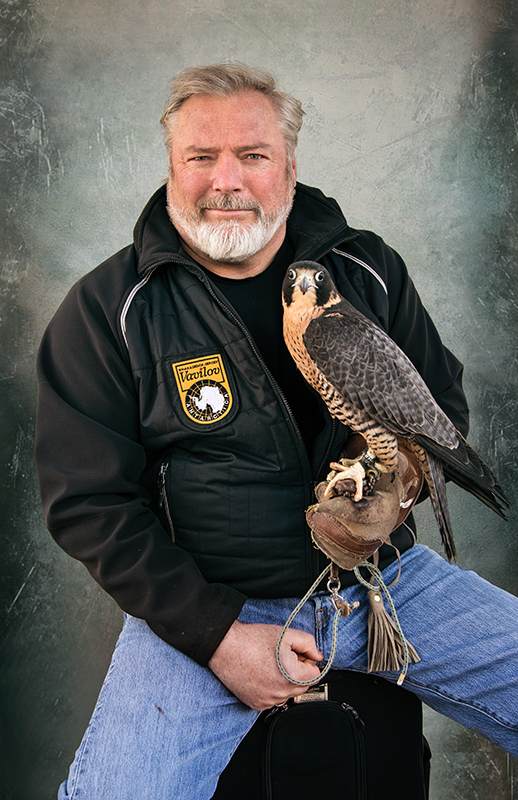-“Falcons are now wearing these tiny satellite transmitters. Space and time means nothing to them. We had one who travelled from Edmonton to Mazatlan in eight days. Some that migrate to Central and Southern America in the winter are travelling more than 1,000 kilometres in a day.
– “I always thought since I was a kid that falcons would be closely related to hawks. But recent genetics studies place them more closely related to parrots. We always wondered why falcons didn’t build their own nests. When they molt, their feathers come off starting from the centre outwards, which is totally different from hawks but similar to parrots.
-“Falconry is probably well over 4,000 years old. It met its heyday in medieval times. Before the invention of the shotgun, it was the main way of hunting grouse. So, you’ll see portraits of many of the British kings with falcons on the wrist and, if you read Shakespeare, it’s full of falconry references.
-“Training a raptor for falconry is completely different than training any other animal. They’re always one meal away from saying bye to you. But if they’re too fat, they don’t do what you want them to. So, there’s a great expression: Fat falcons make for skinny falconers because you’re chasing them all over the place. It’s all about the food.
-“Virtually all the peregrines we now have in Alberta are related to the birds that came out of the breeding program from the ’70s. Some of the techniques that are still used to breed falcons internationally were started in Alberta.
-“This is the kinky end of wildlife biology: We were having trouble getting the falcons to copulate in captivity. So, we deliberately imprinted male peregrines on people. Imprinting means that when most birds hatch, they relate to the first animal they see. So if they see a person, they’ll think they’re a person. They’ll be sexually attracted to people. So, we imprinted these male peregrines on people; they’d court the people, bring them food and copulate on a special hat. The bird jumps on the hat, leaves a deposit – and boom – it works very well. We’d collect the sperm and artificially inseminate the female.”
